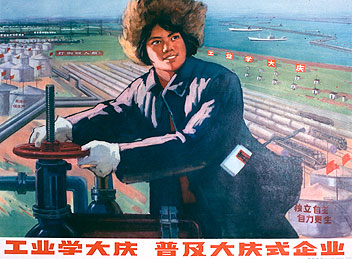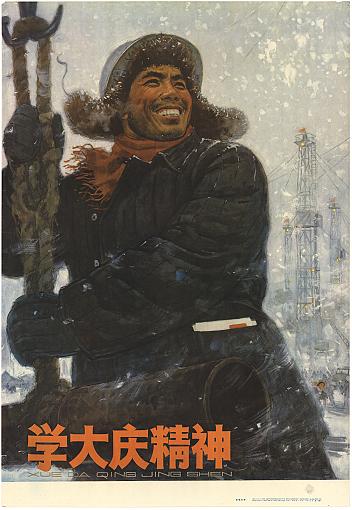Daqing — Industrialization Under Harsh Conditions
The Dazhai brigade served as a model to strive for agricultural development and modernization under very severe conditions. In a very similar way Daqing is associated with the drive to safeguard China with sufficient petroleum. It would simultaneously inspire all other industrial sectors to move forward in a self-reliant way. This at the time almost completely excluded foreign trade and import of industrial goods and equipment.
Daqing
China’s production of petroleum was in the early 1960’s almost neglible. It increased to more than 100 million ton in 1978. A substantial share of this production came from the Daqing oil field in Heilongqiang province in Northeast China. Large numbers of workers and technicians struggled throughout the 1960s under very primitive conditions. Exploiting reserves in the wide expanse of Daqing oil fields was almost completely done without any foreign expertise or equipment. Thus Daqing was throughout the 1970s visualized as a model for all other industrial sectors.
Daqing is located far away from the major sources of demand. After creating gushing wells, petroleum still had to be transported in railway tankers. A first pipeline was not built until the mid-1970s. One important purpose was to export oil to earn foreign exchange. Further exploration, after Daqing, expanded in a number of areas including the Bohai bay. Oil supplies also directly provided raw material for the petrochemical industry and indirectly for the artificial fibre industry. Agriculture benefited as the expanding fertilizer industry also required petroleum products for its manufacture. In the meantime coal remained by far the major product to meet the country’s energy needs.

Industry Learns from Daqing – Establish Daqing Style Enterprises (311-70-70)

Study the Daqing Spirit, 1965 (314-35-275)

Moving to the Sea to get Oil (Selfreliance– Strengthen our Efforts) (311-1-1)
